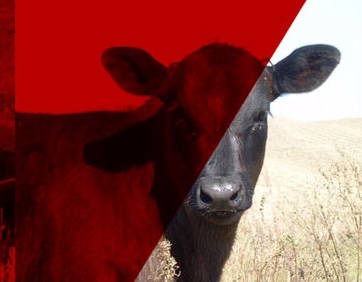Methane (CH₄) is one of the three primary greenhouse gases (GHGs) contributing to global warming, alongside carbon dioxide (CO₂) and nitrous oxide (N₂O). Although methane comprises about 11% of total GHGs, it is significantly more potent in trapping heat than CO₂. Importantly, methane has a relatively short atmospheric half-life of 9 to 12 years, meaning reductions in methane emissions can yield quicker climate benefits compared to other GHGs.
In agriculture, methane emissions primarily stem from enteric fermentation in ruminants like beef and dairy cattle. These animals possess a rumen which is a large fermentation chamber populated by billions of microbes including bacteria, archaea (specifically methanogens), fungi, and protozoa. These microbes break down fibrous plant materials, enabling cattle to convert otherwise indigestible feed into useable energy and protein. However, this microbial digestion also produces methane, which is expelled through eructation (or burping). Cattle can produce 150 - 600 liters (40 - 160 gallons) of methane per day, and this process accounts for about 4% of the 10% of GHGs attributed to agriculture.
Methane production is influenced by several factors including diet, feed intake, animal and microbial genetics, and stage or phase of production. Research has shown that methane output is a moderately heritable trait, opening the door to genetic selection as a mitigation strategy. In fact, recent grants have been awarded to UNL researchers to explore genetic tools and microbiome management strategies aimed at reducing methane emissions without compromising animal performance.

Measurement of methane emissions is complex. Techniques vary, each with trade-offs in precision, cost, and scalability. These tools have enabled researchers to test various mitigation strategies, including dietary interventions and feed additives.
Over the last several years an international effort has been addressing this problem and resulted in some exciting findings that may one day lead to widespread application and reduction of enteric methane production in cattle. One promising feed additive is 3-nitrooxypropanol (3-NOP), which is currently approved for dairy cattle in the U.S. 3-NOP has been shown to reduce methane emissions with the extent depending on the diet. Other strategies include feeding high-grain diets or adding fat, which can reduce methane production but must be balanced against potential impacts on animal performance. Seaweed, particularly varieties containing bromoform, have shown methane reductions of up to 63%, though commercial viability and regulatory approval remain an open topic.
Beyond feed strategies, manure management also plays a role. Methane is released during manure decomposition, especially in lagoons. Anaerobic digesters can capture this methane for use as renewable energy, while also producing fertilizer and livestock bedding.
Ultimately, reducing methane emissions from cattle is a multifaceted challenge. It requires balancing environmental goals with animal health, productivity, and economic feasibility. Ongoing research at the University of Nebraska is helping producers make informed decisions by developing practical, science-based solutions that support both sustainability and livestock well-being.
As data from research is released, the Cattle Methane website will be updated.
Article authored by: Tami Brown Brandl – Professor of Biological Systems Engineering, Galen Erickson – UNL Feedlot Specialist, Samodha Fernando – UNL Rumen Microbiologist, Kortney Harpestad – UNL Animal Science Extension Program Associate, Paul Kononoff – UNL Dairy Specialist, Keara O’Reilly – UNL Research Associate Professor, Rick Rasby – UNL Extension Specialist, Matt Spangler – UNL Beef Genetics Specialist, Jessica Sperber – UNL Feedlot Extension Specialist, Rick Stowell – UNL Biological Systems Engineer Specialist

